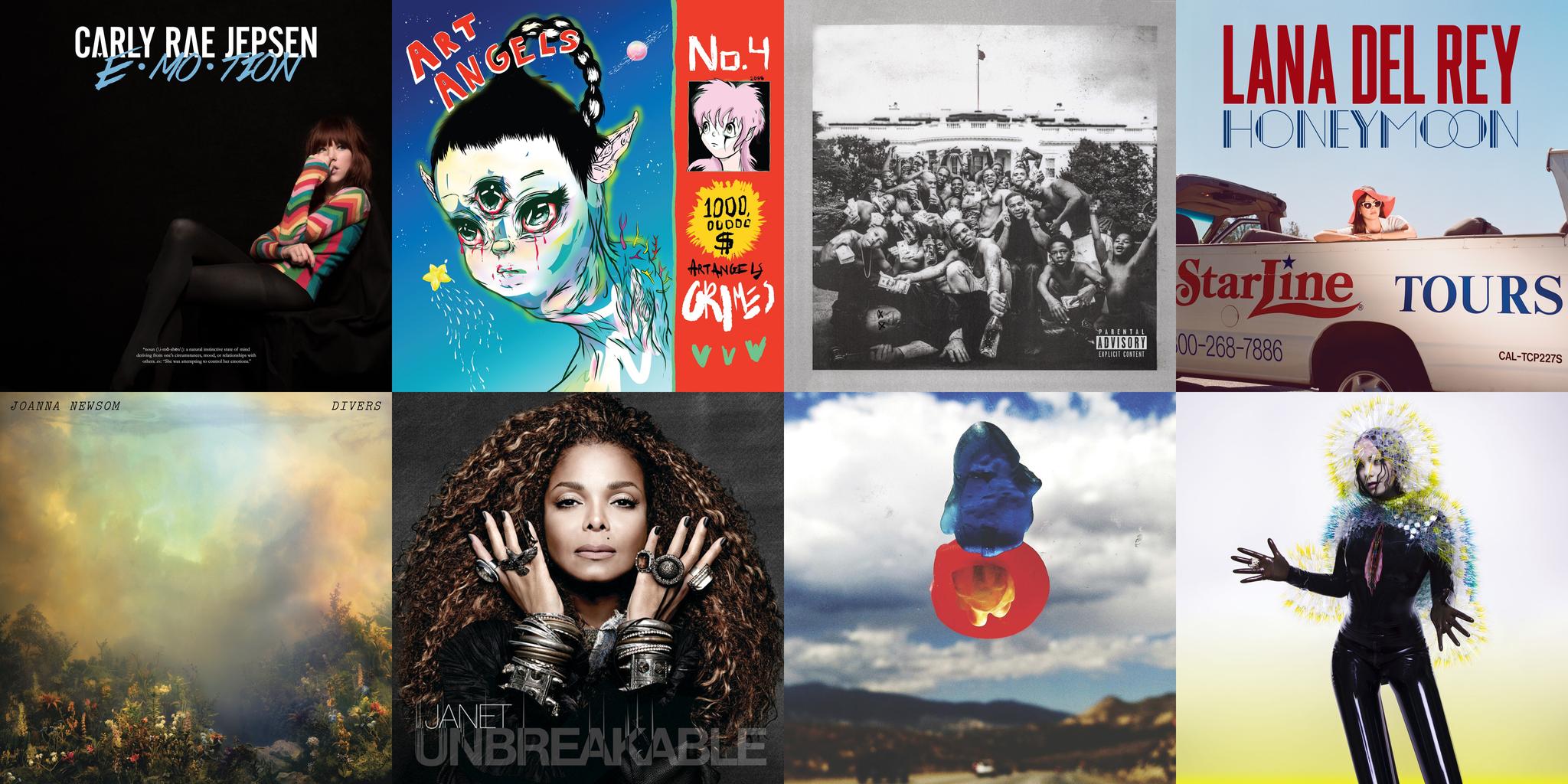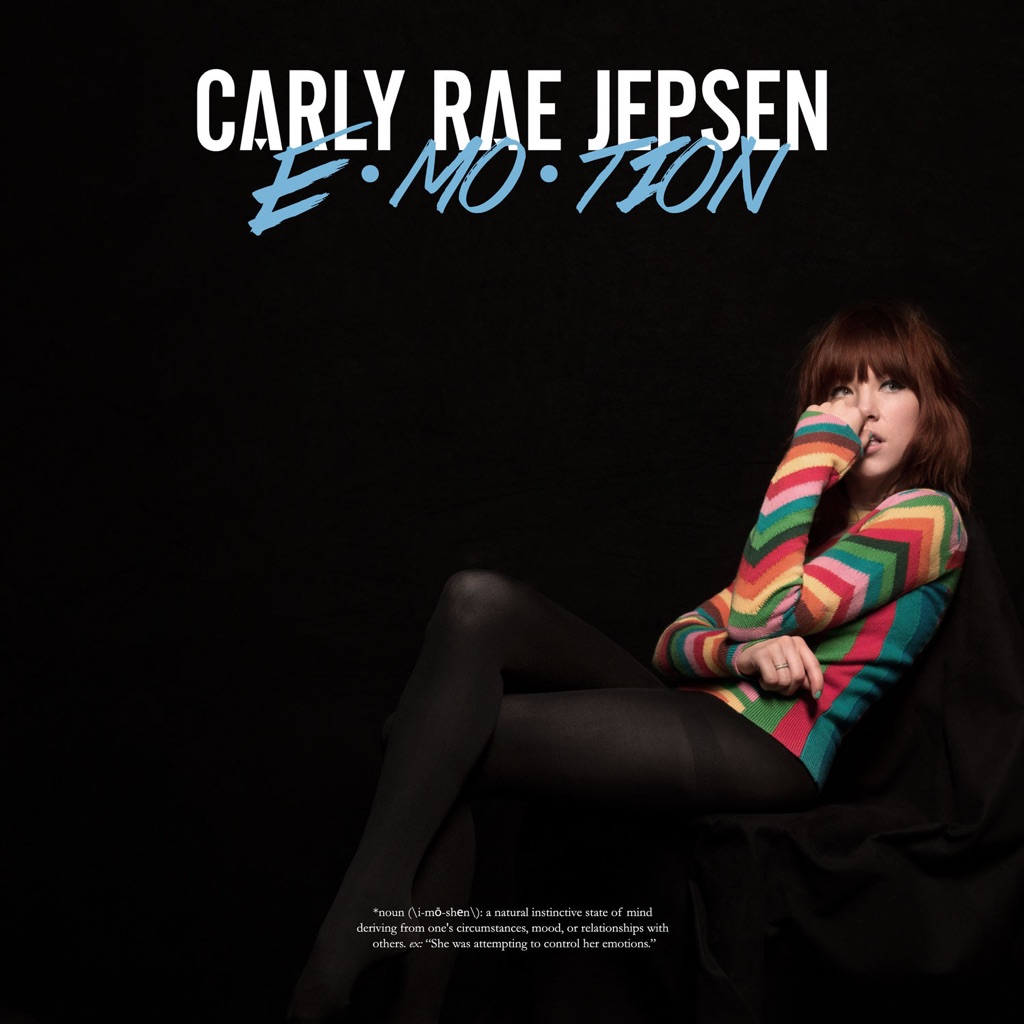
Cosmopolitan's 15 Best Albums of 2015
Justin Bieber, Carly Rae Jepsen, and maybe that Adele person. She put something out, right?
Published: December 16, 2015 23:01
Source


*Art Angels*’ opening trio of songs present a handy summation of Claire Boucher’s singular appeal. The operatic “Laughing and Not Being Normal” opens before making way for “California”. Ostensibly an irresistible country-twanged foot-tapper and easily the catchiest thing she’s recorded, its lyrics unload a bleak commentary on her industry’s treatment of female stars. Next up: the strident “Scream” featuring Taiwanese rapper Aristophanes and plenty of actual howling. Whether discordant and urgent (“Flesh without Blood”, “Kill V. Maim”) or dazzlingly beautiful (“Easily”, “Pin”), *Art Angels* is a Catherine wheel of ferocious pop invention and Grimes’ grandest achievement.

Thanks to multiple hit singles—and no shortage of critical acclaim—2012’s *good kid, m.A.A.d city* propelled Kendrick Lamar into the hip-hop mainstream. His 2015 follow-up, *To Pimp a Butterfly*, served as a raised-fist rebuke to anyone who thought they had this Compton-born rapper figured out. Intertwining Afrocentric and Afrofuturist motifs with poetically personal themes and jazz-funk aesthetics, *To Pimp A Butterfly* expands beyond the gangsta rap preconceptions foisted upon Lamar’s earlier works. Even from the album’s first few seconds—which feature the sound of crackling vinyl and a faded Boris Gardiner soul sample—it’s clear *To Pimp a Butterfly* operates on an altogether different cosmic plane than its decidedly more commercial predecessor. The album’s Flying Lotus-produced opening track, “Wesley’s Theory,” includes a spoken-word invocation from musician Josef Leimberg and an appearance by Parliament-Funkadelic legend George Clinton—names that give *To Pimp a Butterfly* added atomic weight. Yet Lamar’s lustful and fantastical verses, which are as audacious as the squirmy Thundercat basslines underneath, never get lost in an album packed with huge names. Throughout *To Pimp a Butterfly*, Lamar goes beyond hip-hop success tropes: On “King Kunta,” he explores his newfound fame, alternating between anxiety and big-stepping braggadocio. On “The Blacker the Berry,” meanwhile, Lamar pointedly explores and expounds upon identity and racial dynamics, all the while reaching for a reckoning. And while “Alright” would become one of the rapper’s best-known tracks, it’s couched in harsh realities, and features an anthemic refrain delivered in a knowing, weary rasp that belies Lamar’s young age. He’s only 27, and yet he’s already seen too much. The cast assembled for this massive effort demonstrates not only Lamar’s reach, but also his vast vision. Producers Terrace Martin and Sounwave, both veterans of *good kid, m.A.A.d city*, are among the many names to work behind-the-boards here. But the album also includes turns from everyone from Snoop Dogg to SZA to Ambrose Akinmusire to Kamasi Washington—an intergenerational reunion of a musical diaspora. Their contributions—as well as the contributions of more than a dozen other players—give *To Pimp a Butterfly* a remarkable range: The contemplations of “Institutionalized” benefit greatly from guest vocalists Bilal and Anna Wise, as do the hood parables of “How Much A Dollar Cost,” which features James Fauntleroy and Ronald Isley. Meanwhile, Robert Glasper’s frenetic piano on “For Free? (Interlude)” and Pete Rock’s nimble scratches on “Complexion (A Zulu Love)” give *To Pimp a Butterfly* added energy.


Harpist and singer/songwriter Joanna Newsom’s idiosyncratic take on folk and Americana has always been a powerful—if polarizing—experience. Her fourth album strikes a balance between the ornate orchestral explorations of 2006’s *Ys* and the more stripped-down confessions of 2010’s *Have One on Me*. She blends labyrinthine wordplay (“Bleach a collar/Leach a dollar/From our cents/The longer you live, the higher the rent”) and obscure subject matter (the names of Lenape villages on what is now New York City) into songs that are passionate, sincere, and surprisingly immediate.



“Don’t remove my pain / It is my chance to heal.” Delivered in a wounded cry of desperation, this lyric—from standout track “Notget”—is emblematic of Björk’s profoundly vulnerable ninth studio album. Given sonic texture by her lush string arrangements and the skittering beats of co-producer Arca, *Vulnicura* was written in response to the dissolution of Björk’s longtime relationship with artist Matthew Barney. Following the cosmically conceptual *Biophilia* (2011), it’s disarming yet reassuring to hear the Icelandic icon’s stratospheric voice wailing bluntly about recognizable human emotions. In the vibrant album closer “Quicksand,” she sings of finding new life through heartache: “The steam from this pit / Will form a cloud / For her to live on.”

The peerless indie trio’s first LP in a decade is 33 minutes of pure, lean, honest-to-goodness rock. Corin Tucker is in full command of her howitzer of a voice on standouts like “Surface Envy.” Carrie Brownstein’s haughty punk sneer leads the glorious “A New Wave.” Janet Weiss’ masterful drumming navigates the songwriting’s hairpin tonal shifts, from the glittering “Hey Darling” to the turbulent album closer, “Fade.\" *No Cities to Love* is an electrifying step forward for one of the great American rock bands.
“We sound possessed on these songs,” says guitarist/vocalist Carrie Brownstein about Sleater-Kinney’s eighth studio album, No Cities to Love. “Willing it all–the entire weight of the band and what it means to us–back into existence.” The new record is the first in 10 years from the acclaimed trio–Brownstein, vocalist/guitarist Corin Tucker, and drummer Janet Weiss–who came crashing out of the ’90s Pacific Northwest riot grrrl scene, setting a new bar for punk’s political insight and emotional impact. Formed in Olympia, WA in 1994, Sleater-Kinney were hailed as “America’s best rock band” by Greil Marcus in Time Magazine, and put out seven searing albums in 10 years before going on indefinite hiatus in 2006. But the new album isn’t about reminiscing, it’s about reinvention–the ignition of an unparalleled chemistry to create new sounds and tell new stories. “I always considered Corin and Carrie to be musical soulmates in the tradition of the greats,” says Weiss, whose drums fuel the fire of Tucker and Brownstein’s vocal and guitar interplay. “Something about taking a break brought them closer, desperate to reach together again for their true expression.” The result is a record that grapples with love, power and redemption without restraint. “The three of us want the same thing,” says Weiss. “We want the songs to be daunting.” Produced by long-time Sleater-Kinney collaborator John Goodmanson, who helmed many of the band’s earlier albums including 1997 breakout set Dig Me Out, No Cities to Love is indeed formidable from the first beat. Lead track “Price Tag” is a pounding anthem about greed and the human cost of capitalism, establishing both the album’s melodic drive and its themes of power and powerlessness–giving voice, as Tucker says, to those who “struggle to be heard against the dominant culture or status quo.” “Bury Our Friends” has Tucker and Brownstein joining vocal forces, locking arms to defeat a pressing fear of insignificance. It’s also emblematic of the band’s give and take, and commitment to working and reworking each song until it’s as strong as it can be. “‘Bury Our Friends’ was written in the 11th hour,” says Tucker. “Carrie had her great chime-y guitar riff, but we had gone around in circles with how to make that part into a cohesive song. I think Carrie finally cracked the chorus idea and yelled, ‘Sing with me!’” “A New Wave” similarly went through many iterations during the writing process, with five or six potential choruses, before crystallizing. It enters with an insistent guitar riff, and a battle between acceptance and defiance–“Every day I throw a little party,” howls Brownstein, “but a fit would be more fitting.” The album’s meditative title track was inspired by the trend of atomic tourism and its function as a metaphor for someone enthralled and impressed by power. “That form of power, that presence, is not only destructive it’s also hollowed-out, past its prime,” says Brownstein. “The character in that song has made a ritual out of seeking structures and people in which to find strength, yet they keep coming up empty.” Sleater-Kinney’s decade apart made room for family and other fruitful collaborations, as well as an understanding of what the band’s singular chemistry demands. “Creativity is about where you want your blood to flow, because in order to do something meaningful and powerful there has to be life inside of it,” says Brownstein. “Sleater-Kinney isn’t something you can do half-assed or half-heartedly. We have to really want it. This band requires a certain desperation, a direness. We have to be willing to push because the entity that is this band will push right back.” “The core of this record is our relationship to each other, to the music, and how all of us still felt strongly enough about those to sweat it out in the basement and to try and reinvent our band,” adds Tucker. With No Cities to Love, “we went for the jugular.” –Evie Nagy

Justin Bieber shows there’s art in resilience on his fourth studio album. After a turbulent 2014, *Purpose* sees the pop prodigy return with his strongest work to date—an atmospheric, introspective set that’s built on smart production and intimate songwriting. From the radiant “What Do You Mean” to the soulful, Skrillex-produced “I’ll Show You,” this is Bieber at his most vulnerable and honest.



One Direction’s fifth album demonstrates just how far the group has come since their early days on the *X Factor* stage. *Made in the A.M.* is filled with charisma, confidence, and sparkling group chemistry. Upbeat sing-alongs like “Drag Me Down” and “Perfect” are perfectly crafted pop anthems, but the guys shine just as brightly on an epic power ballad like “Infinity.”

